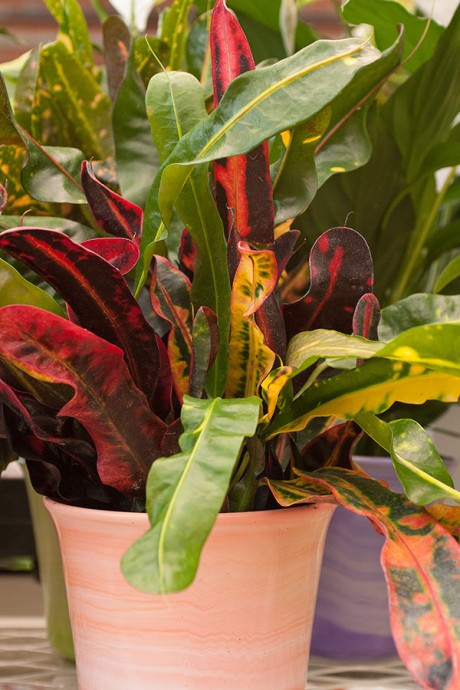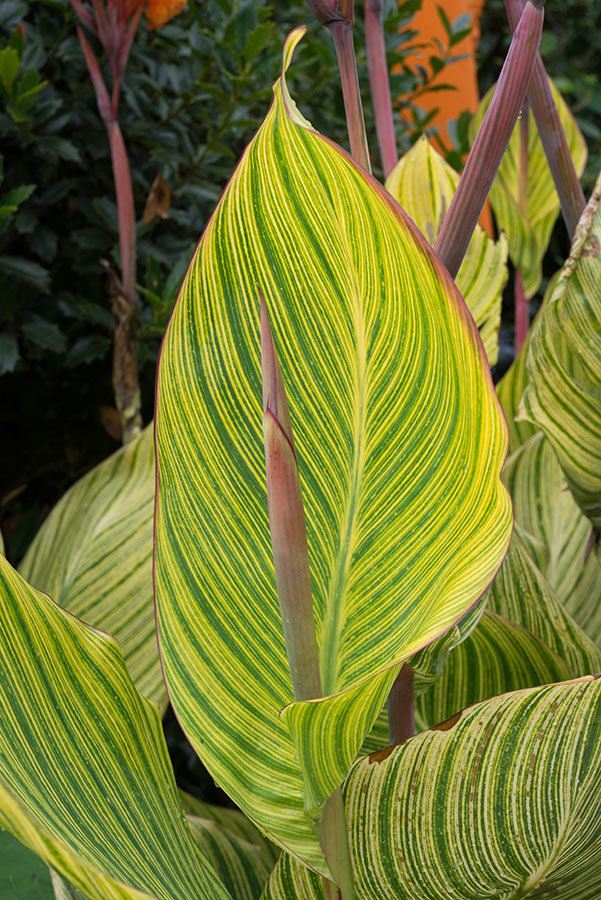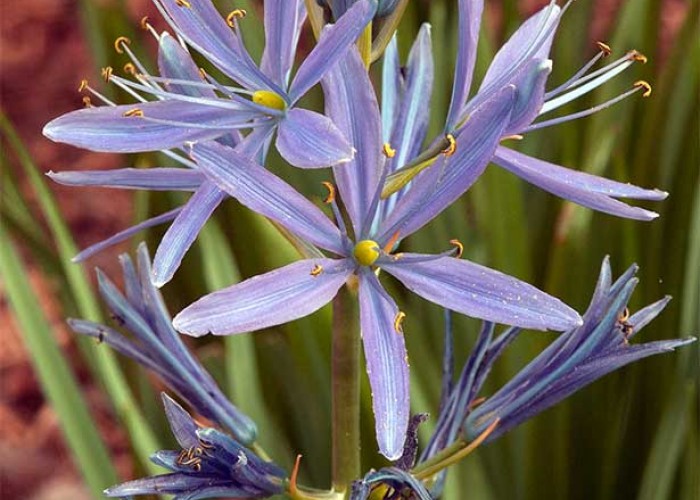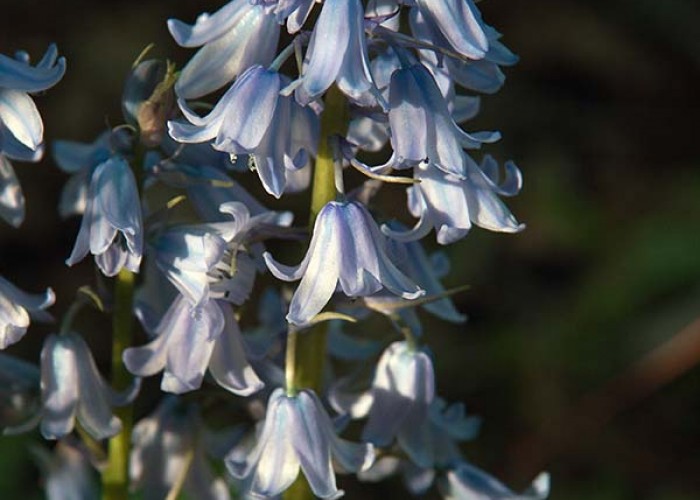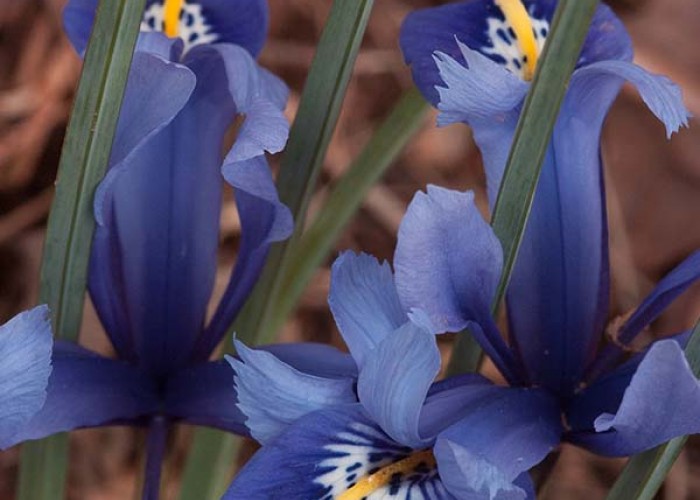Color Your World with Crotons
Plus Garden To-Do’s for November
By L.A. JacksonLooking for a flashy houseplant to visually jazz up an inside setting this fall and winter? The croton (Codiaeum variegatum) can certainly deliver the dazzle. Placed in a sunny location, this tropical plant will literally light a room up with its kaleidoscopic display of foliage colors. Yellow, orange, copper, pink, red, green, ivory — these are the many hues that stripe, streak, spot and blot the leaves, making it look less like a refined indoor plant and more like the result of an explosion in a paint factory.
Crotons also come in a wide range of leaf shapes. Some crotons sport large, glossy leaves almost a foot long and 4 to 6 inches wide, but there are also varieties that wave thin, finger-like leaves at admirers, while others flaunt foliage mimicking the shapes of oak leaves.
Crotons — easily found in nurseries and big box stores with garden centers — are normally bought as 1- to 2-foot specimens, but don’t expect them to stay that way. Depending on the cultivar, they can stretch to 6 feet tall. However, a yearly pruning in the spring will keep them to the size you desire.
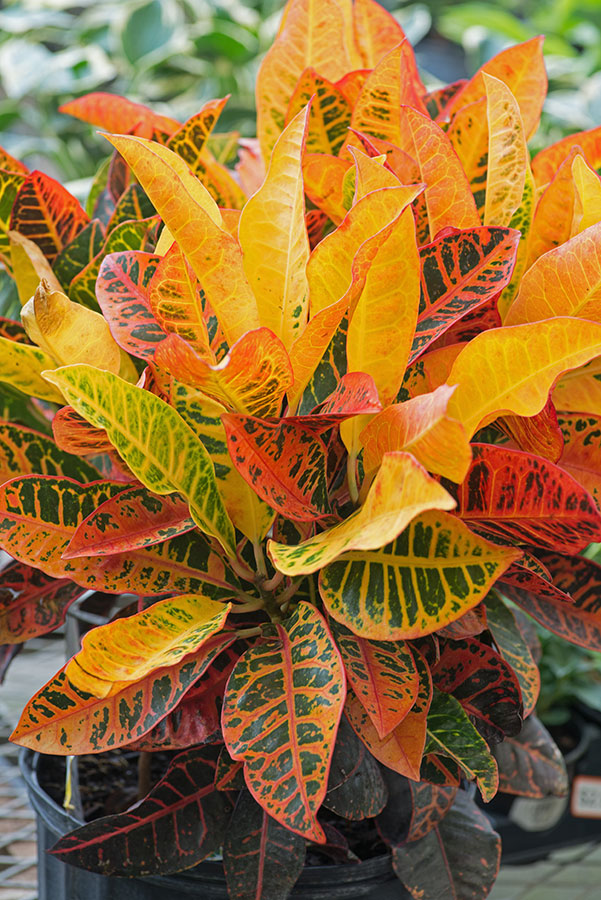 Croton care
Croton care
Leaf-drop is a big bugaboo with indoor crotons, and it is usually caused by dry conditions. Misting the foliage occasionally and putting the plant on a tray of pebbles filled with water for extra humidity will help. In addition, keep the plant away from vent drafts.
Too much moisture can also be bad news. Crotons prefer soil that is slightly damp but not soggy, so water when the upper part of the dirt in the pot feels slightly dry to the touch. The plants will become stressed in standing water, and root rot is a definite possibility. When the leaves begin to wilt, it usually means there is way too much water in the pot.
Monthly applications of a diluted, water soluble, low-nitrogen fertilizer are treats for crotons in the spring and summer when they are actively growing, but during the fall and winter, regular watering will suffice.
Being a plant, the obvious question to ask is, will a croton flower? It can, but the small, ½-inch, star-like, off-white blooms are definitely a sideshow when compared to the riot of colorful leaves.
One word of caution: croton leaves are toxic, so keep this plant away from the curious mouths of kids and pets. This plant's sap can, in some cases, also cause dermatitis, so minimize touching the leaves and branches.
Garden To-Do’s for November
- Canna leafrollers (photo left) are caterpillars that spend the summer merrily chewing on canna lily foliage, making an otherwise pretty plant look raggedy. In severe cases, they can prevent leaves from unfurling and even reduce flower production. A good time to strike back is after the first frosts of autumn. These caterpillars like to overwinter deep in the rolls of spent leaves, so simply cut cold-bit canna stalks down to a few inches above the ground, and send the clippings, as well as the slumbering leafrollers, to the local landfill.
- A nonchemical way to help reduce problems with bad garden bugs next year is to turn over any vacated plant beds at the end of November to expose insects tucked away underground to the freezing c-c-c-cold. To be more effective, do this again in January and February.
- Beginning this month, force paperwhite narcissus bulbs into flower by planting them indoors in shallow pots of pebbles and water so they will be ready as blooming presents in time for Christmas.
-
More November Garden Tips
-
Share this story:

